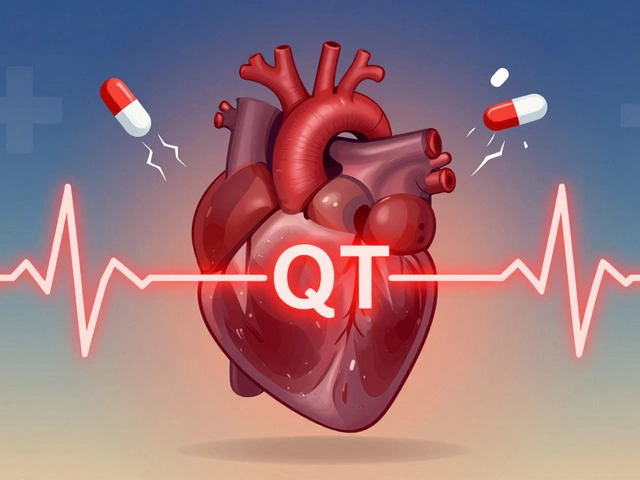NSAID Selection Assistant
Personalized NSAID Selection
Select your health factors to find the most suitable NSAID option based on your medical profile.
Recommended Options
Recommended Option
Alternative Option
Why this recommendation?
Key considerations
- GI Safety High
- CV Safety Medium
- Dosing Once daily
When you need reliable pain relief, Cobix (celecoxib) often shows up in discussions about arthritis, back pain, and post‑surgical discomfort. Yet dozens of other NSAIDs sit on the market, each promising a different balance of effectiveness, safety, and cost. This guide walks you through what makes Cobix unique, how it stacks up against the most common alternatives, and which factors should shape your choice.
What is Cobix (Celecoxib)?
Cobix (Celecoxib) is a prescription‑only, COX‑2‑selective non‑steroidal anti‑inflammatory drug (NSAID). It works by inhibiting the cyclooxygenase‑2 enzyme, which drives inflammation and pain, while sparing COX‑1 that protects the stomach lining. In the UK, the usual dose for osteoarthritis is 200mg once daily, and for acute pain it can be 400mg as a single dose or split into 200mg twice daily.
Typical uses include osteoarthritis, rheumatoid arthritis, ankylosing spondylitis, and short‑term management of post‑operative pain. Because it targets COX‑2, Cobix tends to cause fewer gastrointestinal (GI) ulcers than non‑selective NSAIDs, but it can still raise cardiovascular (CV) risk, especially in patients with existing heart disease.
How Cobix Fits Within the NSAID Family
All NSAIDs share the goal of reducing prostaglandin production, but they differ in enzyme selectivity. Non‑selective drugs like ibuprofen block both COX‑1 and COX‑2, which can lead to stomach irritation. Cobix, as a COX‑2 inhibitor, offers a cleaner GI profile at the expense of a slightly higher CV signal. Understanding this trade‑off helps you decide whether the extra stomach protection is worth the potential heart considerations.
Common Alternatives to Cobix
- Ibuprofen - a non‑selective NSAID widely available over the counter. Doses range from 200mg to 800mg every 6‑8hours. Good for mild‑to‑moderate pain, but higher GI risk.
- Naproxen - another non‑selective option with a longer half‑life, allowing twice‑daily dosing (250‑500mg). Slightly lower CV risk than ibuprofen, but still irritates the stomach.
- Diclofenac - often prescribed for joint pain and inflammation. Typical dose is 50‑75mg two to three times daily. Effective, yet carries higher CV warnings.
- Meloxicam - a semi‑selective COX‑2 inhibitor taken once daily (7.5‑15mg). Balances GI safety and potency, but still requires monitoring for heart health.
- Aspirin - low‑dose (75‑100mg) is used for cardioprotection, while higher doses (300‑600mg) serve as an NSAID. Strong GI side effects; not ideal for chronic pain.
Side‑by‑Side Comparison
| Brand / Generic | COX Selectivity | Typical Daily Dose | Onset of Relief | GI Risk | CV Risk | Average UK Cost (per month) |
|---|---|---|---|---|---|---|
| Cobix (Celecoxib) | COX‑2 selective | 200mg - 400mg | 30‑60min | Low | Moderate‑high | £25‑£35 |
| Ibuprofen | Non‑selective | 200mg - 800mg q6‑8h | 45‑90min | Medium‑high | Low‑medium | £5‑£10 (OTC) |
| Naproxen | Non‑selective | 250mg - 500mg bid | 45‑90min | Medium | Low‑medium | £8‑£12 (OTC) |
| Diclofenac | Non‑selective | 50mg - 75mg t.i.d. | 30‑60min | Medium‑high | High | £12‑£20 |
| Meloxicam | Semi‑selective (COX‑2 favoured) | 7.5mg - 15mg qd | 30‑60min | Low‑medium | Medium‑high | £15‑£25 |
| Aspirin | Non‑selective | 300mg - 600mg tid | 30‑45min | High | Low (low‑dose) / High (high‑dose) | £4‑£8 |
Decision‑Making Checklist
Use this quick guide to match your personal health profile with the right drug.
- Stomach history: If you have ulcers or frequent dyspepsia, Cobix or meloxicam (more COX‑2‑biased) usually feel gentler on the gut.
- Heart health: Existing hypertension, coronary artery disease, or a history of stroke tilts the scale toward ibuprofen or naproxen, which carry lower CV warnings than Cobix.
- Pain intensity: For severe, acute post‑surgical pain, diclofenac’s fast onset and strong potency can be advantageous, but only under close supervision.
- Cost considerations: Over‑the‑counter ibuprofen and naproxen are far cheaper than a prescription COX‑2 inhibitor. Check your NHS prescription exemption status.
- Drug interactions: Cobix interacts with some anticoagulants (warfarin), certain antidepressants, and high‑dose statins. Non‑selective NSAIDs share many of these risks, but the exact profile differs.
Practical Tips for Switching or Starting
- Consult your GP before swapping any NSAID, especially if you have heart or kidney concerns.
- Start at the lowest effective dose. For Cobix, 200mg daily often controls chronic arthritis pain.
- Take the tablet with food or a full glass of water to minimise stomach upset.
- Monitor blood pressure and any new swelling in the legs for the first few weeks.
- If you notice bruising, black‑tipped stools, or sudden chest pain, seek medical help immediately.
- When ordering from an online pharmacy, verify that the site requires a valid prescription for Cobix and displays the pharmacy’s registration number.
When Cobix Is the Right Choice
Patients who need long‑term pain control but have a history of gastric irritation often find Cobix the best compromise. Its once‑daily dosing also helps adherence compared with three‑times‑daily ibuprofen regimens. However, those with established cardiovascular disease should discuss alternatives with their clinician.
Frequently Asked Questions
Is Cobix stronger than ibuprofen?
Cobix typically provides comparable pain relief to high‑dose ibuprofen, but it does so with a lower risk of stomach ulcers because it spares COX‑1. Strength isn’t the only factor; the side‑effect profile often decides which drug feels “stronger” to a patient.
Can I take Cobix together with aspirin?
Combining a COX‑2 inhibitor with aspirin increases bleeding risk, especially at higher aspirin doses. Low‑dose aspirin for cardioprotection may be permissible, but only under doctor supervision.
What are the most common side effects of celecoxib?
Patients often report mild headache, mild stomach discomfort, or swelling of the ankles. Rare but serious events include heart attack, stroke, or severe skin reactions.
Is long‑term use of Cobix safe?
Long‑term therapy can be safe for many, especially when regular monitoring of blood pressure, kidney function, and heart health is in place. Your doctor will weigh benefits against any rising CV risk.
How does the cost of Cobix compare with over‑the‑counter NSAIDs in the UK?
Cobix usually costs £25‑£35 per month when dispensed via a private prescription, while ibuprofen or naproxen bought OTC cost under £10 for a comparable supply. Some NHS patients qualify for free prescriptions, which can narrow the gap.







Annette van Dijk-Leek
October 16, 2025 AT 13:01